Providence, RI Pollen and Allergy Report for Summer 2023
Pollen Allergy Trends in Providence, RI
When is pollen lowest in Providence, RI?

February
Lowest month total PPM
Avg. PPM
When is pollen highest in Providence, RI?

April
Highest month total PPM
Avg. PPM
How does pollen in Providence, RI compare to Rhode Island?
Providence has a equal average PPM than the state of Rhode Island.
Providence yearly avg PPM:
Rhode Island yearly avg PPM:
How does pollen in Providence, RI compare to the USA?
Providence has a higher average PPM than the USA.
Providence yearly avg PPM:
USA yearly avg PPM:
Is pollen worse this year in Providence, RI?
Spring 2023 was worse than spring 2022.
Spring 2023 PPM:
Spring 2022 PPM:
Average PPM in Providence, RI
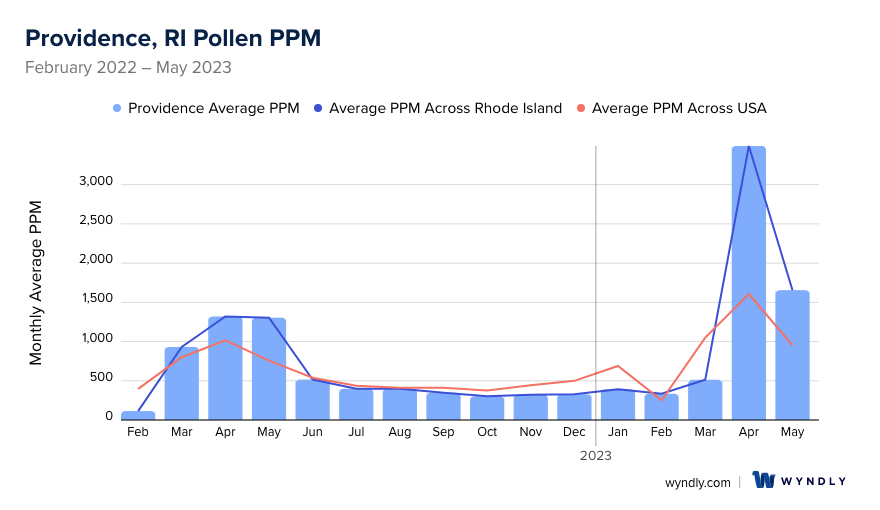
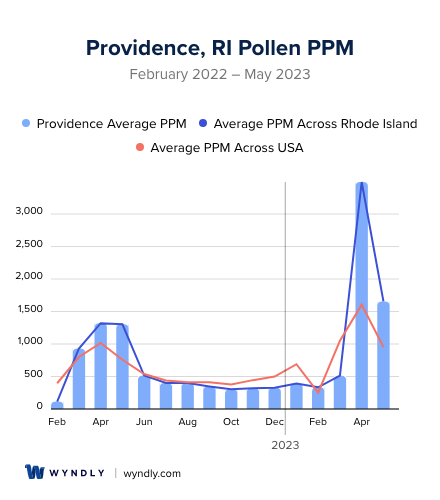
Providence, RI Pollen and Allergy Breakdown by Month
Grass
When is grass pollen highest in Providence, RI?
April has the highest grass pollen in Providence, RI with an average PPM of
When is grass pollen lowest in Providence, RI?
December has the lowest grass pollen in Providence, RI with an average PPM of
Tree
When is tree pollen highest in Providence, RI?
April has the highest tree pollen in Providence, RI with an average PPM of
When is tree pollen lowest in Providence, RI?
October has the lowest tree pollen in Providence, RI with an average PPM of
Weed
When is weed pollen highest in Providence, RI?
April has the highest weed pollen in Providence, RI with an average PPM of
When is weed pollen lowest in Providence, RI?
February has the lowest weed pollen in Providence, RI with an average PPM of
Providence, RI Pollen Monthly Breakdown by Pollen Type
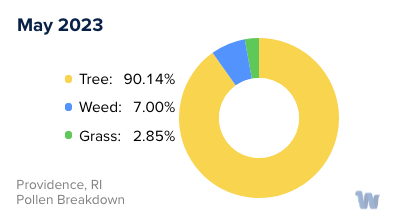
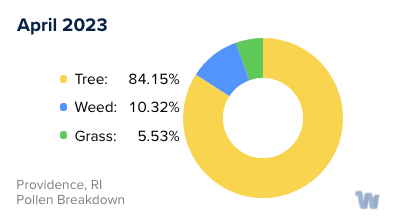
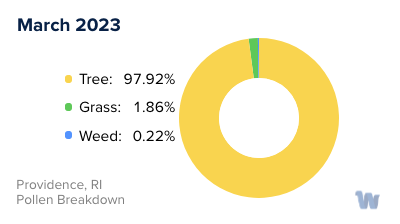
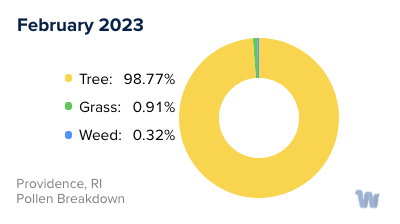
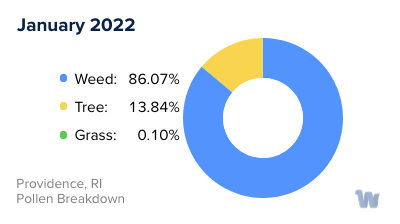
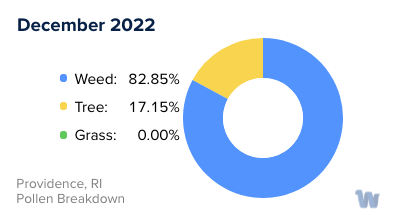
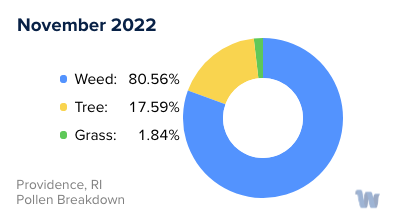
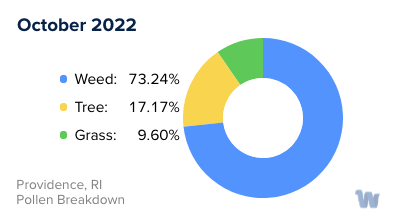
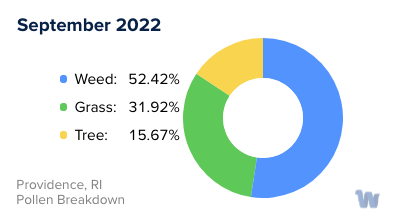
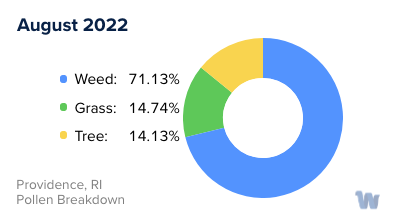
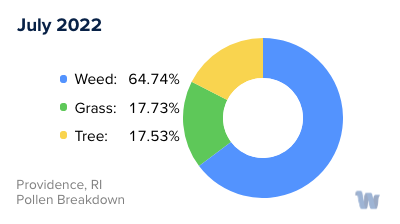
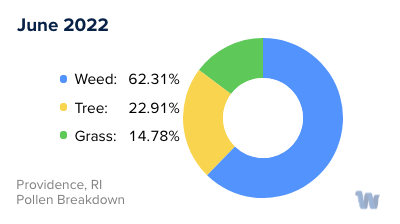
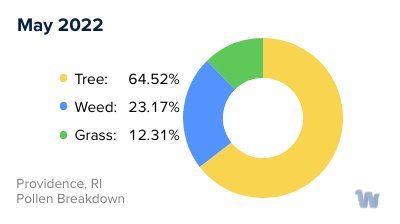
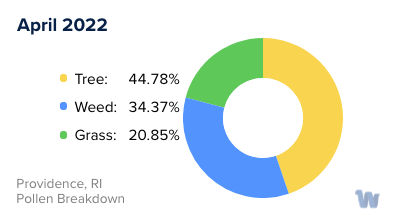
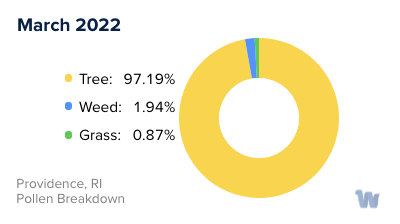
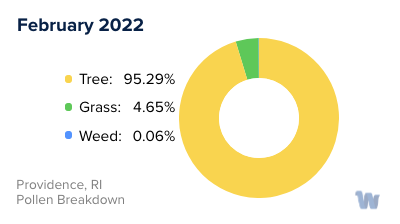
Pollen and Hay Fever in Providence, RI
As the vibrant green leaves start to appear on trees and the flowers begin to bloom, the city of Providence, Rhode Island welcomes the beautiful, yet often challenging, spring season. This is a time when many residents find themselves dealing with pollen allergies, commonly known as hay fever. This condition is characterized by a set of symptoms such as sneezing, itchy or watery eyes, and a runny or stuffy nose, all triggered by the pollen released into the air by plants.
Providence, nestled in the heart of New England, experiences a variety of pollen sources throughout the changing seasons. In the early spring, residents may notice an increase in tree pollen. The most common culprits are oak, maple, and birch trees. These trees release lightweight pollen grains that can be easily carried by the wind, spreading far and wide.
As the seasons transition into late spring and early summer, grass pollen becomes more prevalent. The primary sources of this pollen type are ryegrass and Timothy grass, which are common throughout Rhode Island. Like tree pollen, grass pollen is lightweight and easily dispersed by wind, making it a common allergen.
The late summer and fall seasons bring a different type of pollen to the forefront: weed pollen. The primary source of this pollen in Providence is ragweed. Even though each ragweed plant only lives for one season, it is highly productive and can release up to a billion pollen grains, which can remain airborne for days and travel great distances.
Living in Providence, Rhode Island means experiencing a full range of seasons, each with its unique beauty. However, these changing seasons also bring with them different types of pollen, which can cause discomfort for those with hay fever. Understanding the types of pollen and their seasonal patterns can help residents better anticipate and manage their allergy symptoms, making the most of the natural beauty Providence has to offer.

